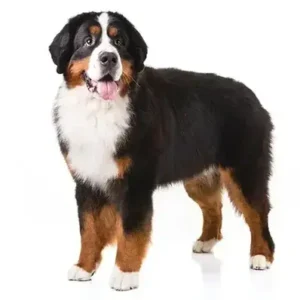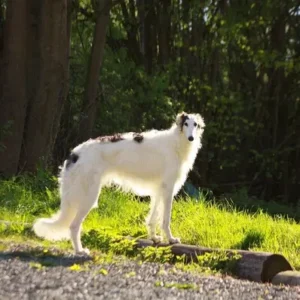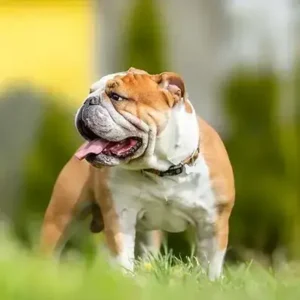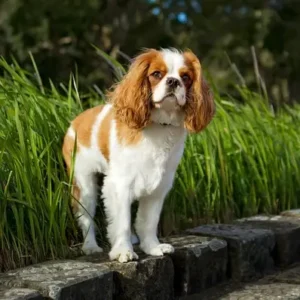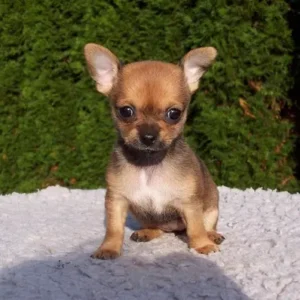Siberian Husky History/Origin
The Siberian Husky is one of the oldest dog breeds, believed to have originated among the Chukchi, a tribe of Siberian nomads, around 3,000 years ago. DNA tests confirm their ancient lineage. The Chukchi developed the Siberian Husky, originally known as the Chukchi Sled Dog, for fast transportation and companionship.
These purebred dogs often slept with children, providing warmth and comfort. The Chukchi needed a small sled dog capable of hauling light loads over long distances in harsh, sub-zero conditions, leading to the development of the breed’s speed, endurance, and good temperament.
Siberians caught public attention in the early 1900s by pulling sleds in races. They gained fame during the 1925 serum run. A team led by the legendary musher Leonhard Seppala relayed life-saving serum 658 miles to Nome, Alaska.
This journey took just five and a half days and helped combat a diphtheria outbreak. The heroic lead dog, Balto, became one of the most honored hero dogs in history. Fur traders relied on these resilient and hardworking dogs to transport goods and supplies across vast and challenging terrains.
Balto – Source: AKC.org
In 1908, Siberian Huskies were imported to Alaska, United States during the gold rush and used as sled dogs in the All-Alaska Sweepstakes, a 408-mile dogsled race. Despite the Soviet government closing the borders to Siberia in 1930, the breed thrived in North America, maintaining many qualities of its Chukchi ancestors.
The breed was recognized by the American Kennel Club (AKC) in 1930 under Working Group. Recognized by the United Kennel Club as the “Arctic Husky” in 1938, the breed’s name was changed to Siberian Husky in March 1991.
The Siberian Husky’s journey from a working dog of the Chukchi tribe to a popular companion worldwide shows its versatility and resilience. With a compact body, well-furred coat, erect ears, and a thick, sickle-shaped tail, the Siberian Husky’s appearance immediately suggests its northern heritage.
Siberian Husky Personality
The Siberian Husky is a breed renowned for its unique blend of strength, intelligence, and independence. With a striking appearance marked by piercing eyes and a thick double coat, they exude an aura of confidence and resilience.
Beneath their wolf-like exterior lies a friendly and sociable nature, making them wonderful companions for active families.
- Temperament
Siberian Huskies possess a temperament that reflects their storied history as sled dogs in harsh Arctic conditions. Renowned for their friendly and outgoing nature, they exude an infectious enthusiasm for life. Despite their wolf-like appearance, they’re remarkably gentle and affectionate, often forming strong bonds with their families.
Their intelligence is matched by their mischievousness, as they enjoy exploring and testing boundaries. With their high energy levels and love for adventure, Siberian Huskies thrive in active environments where they can engage in plenty of physical and mental stimulation.
- Potential Challenges
While Siberian Huskies make wonderful companions, their unique temperament also presents certain challenges for potential owners. Their high energy levels demand regular exercise and mental stimulation, which can be difficult for owners with busy schedules or sedentary lifestyles. Their independent nature can lead to stubborn behavior, making consistent training essential.
Additionally, their strong prey drive may pose a risk to smaller animals, requiring careful supervision around cats and other pets. Prospective owners should be prepared to invest time, effort, and patience into meeting the needs of this lively and spirited breed.
Siberian Husky Physical Appearance
The Siberian Husky embodies a medium-sized, well-proportioned working dog with moderate bone structure and a pleasant demeanor. Reflecting its Northern heritage, this breed boasts a moderately compact, fur-covered body, erect ears, and a bushy tail. Husky’s most prominent feature is their eyes which can be brown, blue, or a combination.
Maintaining its working traits, the Siberian Husky excels in pulling light loads over considerable distances at a moderate pace. A healthy Husky has strong, toned muscles without being overweight, achieving a perfect blend of strength and agility.
- Size
Siberian Huskies are of medium size, typically measuring between 20 to 24 inches in height at the shoulder and weighing anywhere from 35 to 60 pounds.
- Coat color
The Siberian Husky’s double coat consists of medium-length hair, with a straight top coat and a soft and dense undercoat. Their thick coat is designed for extreme cold weather. Their coat colors range from the classic black and white to more unique shades like agouti and sable.
Siberian Husky Gender Differences
The distinction between male and female Siberian Huskies lies primarily in their size and temperament. However, it’s crucial to recognize that these differences are just variations within the breed and should not be used to stereotype individual dogs.
- Size differences
Male Siberian Huskies typically stand 21-24 inches tall and weigh between 44-60 lbs, while females generally measure 20-23 inches in height and weigh 35-51 lbs.
- Temperament differences
Male Siberian Huskies typically exhibit a muscular and robust physique, characterized by their playful energy. It’s essential to note their inclination towards dominance and territorial behavior, especially towards other male dogs, often triggered by perceived threats to their territory.
In contrast, female Huskies typically possess a slender and graceful build, reflecting their loyalty and affection towards their owners. They often demonstrate greater independence and trainability compared to males.
Siberian Husky Feed/Nutrition
Siberian Huskies typically require 1.5 to 2 cups of high-quality dry food per day, split into two meals. They are known for being “easy keepers,” requiring relatively small portions of food for their size.
This characteristic can be traced back to their origins as sled dogs, where the Chukchi people developed to pull light loads over long distances in cold climates with minimal food intake.
Additionally, the quality of the dog food plays a significant role in meeting nutritional needs, as higher-quality options provide better nourishment, requiring smaller servings. It’s important to avoid feeding your dog grapes, as they can be toxic and harmful to their health.
Siberian Husky Health
Huskies generally enjoy good health, but like all breeds, they can be susceptible to certain health conditions. Not all Huskies will get any or all of these diseases, but it’s important to be aware of them if you’re considering this breed.
- Cataracts: A cataract is an opacity on the lens of the eye that causes difficulty in seeing. The eye(s) of the dog will have a cloudy appearance. Cataracts usually occur in old age and sometimes can be surgically removed to improve the dog’s vision.
- Hip Dysplasia: Hip dysplasia is a common orthopedic condition in dogs, including Huskies, where the hip joint doesn’t develop properly, leading to instability and degeneration over time. It can cause discomfort, lameness, and reduced mobility, impacting the dog’s quality of life. While genetics play a significant role, other factors like rapid growth, obesity, and improper nutrition can exacerbate the condition.
- Corneal Dystrophy: This condition affects the cornea or outer transparent portion of the eyeball. It is an opacity that is caused by a collection of lipids in the cornea. It is usually seen in young adults and it generally affects more females. There is no therapy for this condition, but it does not seem to affect the vision.
- Progressive Retinal Atrophy: This is a degenerative eye disorder that eventually causes blindness from the loss of photoreceptors at the back of the eye. PRA is detectable years before the dog shows any signs of blindness. Fortunately, dogs can use their other senses to compensate for blindness, and a blind dog can live a full and happy life. Just don’t make it a habit to move the furniture around.
- Coagulopathy: Coagulopathy refers to a condition where the blood’s ability to clot is impaired, leading to excessive bleeding or difficulty in stopping bleeding. It can result from genetic disorders, medication side effects, liver disease, or certain medical treatments. Prompt medical attention is crucial for managing coagulopathy and preventing complications.
Regardless of how healthy your dog is when you first bring them home, you should prepare for any issues that may come up throughout their life. A pet insurance plan can help you stay ready for any of your dog’s veterinary needs.
Siberian Husky Care and Grooming
To maintain a clean home environment with a Siberian Husky, ensure your vacuum cleaner is in good condition and schedule regular grooming sessions. Shedding is significant, particularly during shedding season, but routine brushing helps manage this issue.
Despite their shedding, Huskies are relatively easy to care for and tend to keep themselves clean, similar to cats, without emitting a strong odor or needing frequent baths. However, when bathing is necessary, use a high-quality dog shampoo to preserve their skin’s natural oils.
Regular dental care, including brushing their teeth several times a week, helps prevent gum disease and bad breath. Additionally, trim their nails every one to two months and check their ears weekly for signs of infection. Start grooming routines early to make them a positive experience, ensuring your Husky is comfortable with handling as they grow.
Regular grooming sessions also provide an opportunity to check for any signs of skin issues or infections, promoting early detection and treatment. Additionally, crate training your dog is an effective way to provide them with a safe, comfortable space and helps with house training and managing behavior.
Siberian Husky Rescue Groups
Siberian Huskies are often obtained without a full understanding of the responsibilities involved in their care. Many Huskies need adoption or fostering, emphasizing the importance of considering rescue options over purchasing from breeders. Adopting or fostering a Husky not only provides a loving home for a dog in need but also promotes responsible pet ownership and reduces the number of animals in shelters.
Siberian Husky Price
The price of a Siberian Husky typically ranges from $600 to $1,500, depending on factors such as breeder reputation, pedigree, and location.
Ethical breeders prioritize the welfare of their dogs and strive to improve the breed with each generation. By choosing a reputable breeder, you not only ensure the health and well-being of your new companion but also support responsible breeding practices.
Interesting Facts
- Huskies often have different-colored eyes, a genetic trait known as heterochromia which does not affect their eyesight at all. This condition occasionally occurs in humans as well.
- A husky’s howl can be heard from up to 10 miles away.
- In 1963, a husky named Charlie won the world’s Strongest Dog contest. He triumphed over breeds known for their strength, such as Rottweilers and German Shepherds. Charlie managed to pull a sled weighing over a ton.
- Siberian Huskies appeared in the “Snow Dogs”, in 2002.
Snow Dogs- Source: IMDb
- Siberian Husky has appeared in Dog Show 2024.
Best For
Siberian Huskies are best suited for active individuals or families who enjoy outdoor activities such as hiking and running. They thrive in homes with large yards and are ideal for experienced dog owners who can provide the necessary training and exercise. Huskies are also well-suited for colder climates due to their thick fur.
Top Names
| Male Siberian Husky Names | Female Siberian Husky Names |
| Loki | Luna |
| Thor | Aurora |
| Shadow | Sasha |
| Blaze | Maya |
| Kodiak | Kira |

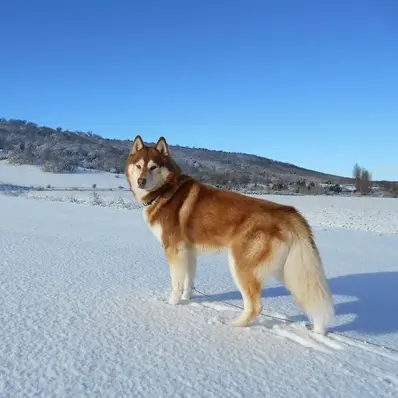







 Balto – Source:
Balto – Source: 

 White and Sable Siberian Husky- Source:
White and Sable Siberian Husky- Source:  White Siberian Husky- Source:
White Siberian Husky- Source:  Grey and White Siberian Husky- Source:
Grey and White Siberian Husky- Source:  Black and White Siberian Husky- Source:
Black and White Siberian Husky- Source: 
 Snow Dogs- Source:
Snow Dogs- Source: 

